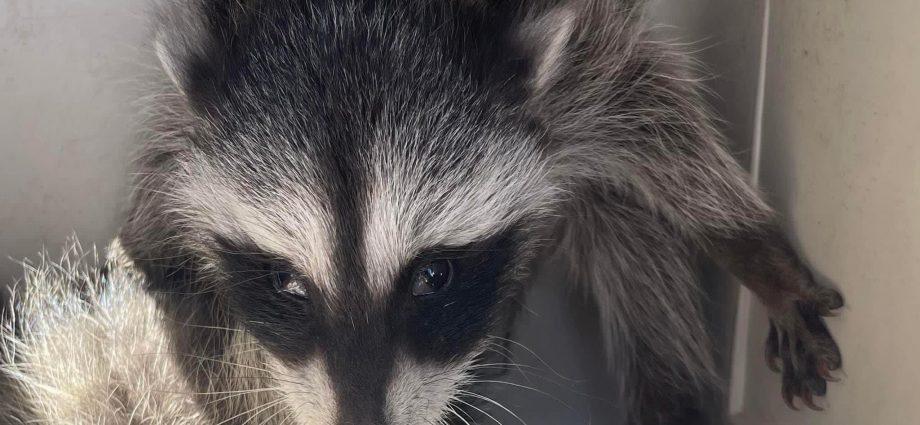by Kevin Foster
Most people in our Santa Cruz mountains have noticed the decrease in raccoon populations. For the last several years distemper has been running rampant through our state. Wildlife centers across the state get calls about raccoons and skunks acting drunk or staggering. With the most common sign, pus or discharge around their eyes, and oily looking fur (as seen in the photo).
Distemper is also often confused for rabies. Rabies and canine distemper are not the same. Both are generally fatal viral diseases but distemper attacks various bodily systems like the gastrointestinal and respiratory systems, while rabies affects the brain and nervous systems. They both affect the spinal cord and have shown symptoms of spinal cord lesions, but their complete list of symptoms are substantially different.
For the safety of other wildlife and pets that aren’t fully vaccinated, it’s always wise to call animal control or your local SPCA. Distemper can be transmitted through two animals sharing the same food or water bowl. Wildlife finding a deceased animal that has passed from distemper and feeding on it will cause spread. And animals coughing or sneezing near one another can transmit through an airborne transfer.
Since the first major outbreak years ago, wildlife centers across the state have now started administering the distemper vaccine in rescued babies before they are released. Bei
ng that it is a canine virus, the baby raccoons get a series of two shots two weeks apart prior to their release back in the wild to try to prevent continued uprisings in wildlife.
Skunks and raccoons are not the only ones to be susceptible to contracting the canine distemper virus. It has been found in domestic and wild dog species, coyotes, foxes, wolves, ferrets, skunks, raccoons, species of large wildcats, and pinnipeds. Domestic cats can also contract the virus, however, infection appears to be mostly asymptomatic. Some of the other signs of distemper are mangy looking coats. Their paws become hard and they appear to be walking as if on hot coals.
So if you’ve called to have a wild animal possibly removed from your property disinfecting is quite easy. Most household disinfectants including bleach and water can sterilize the area. And the virus does not live long in the environment.
There is no known cure for distemper only preventative care and once a wild animal has contracted distemper, the only humane solution is euthanasia. Rabies is spread through

exposure to the saliva of an infected animal, and distemper is generally passed through inhalation of the virus but also can spread through contact with bodily fluids or droppings of the animal that has been infected.
Historically distemper was usually spread from dogs to other forms of wildlife that have come into contact with it, or vice versa but the presence of the virus has become so rampant that it’s increasingly being spread from raccoon to raccoon within their natural habitat. Some diseases have even brought some wildlife species almost to the point of extinction
.
So the best way for us to fight this disease is to vaccinate, vaccinate, vaccinate! Puppies are most susceptible so it’s super important that they be kept contained until their full set of shots are received. This month I thought it was a good topic due to the fact that so many people are reporting that they rarely see raccoons anymore. The lovable and also hated trash pandas are fighting a battle right now; this is why we don’t see them as often as we used to.


